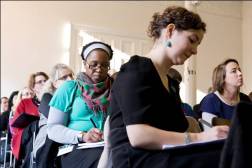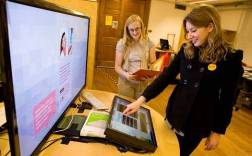The ambition of most cultural institutions today is to provide meaningful and engaging visitor experiences. Audience research supports this by helping to define what ‘engaging experiences’ are and highlighting how these are best achieved. Often this is about recognising and removing barriers to visitor comprehension and motivation, but also understanding how visitors learn and what they gain from a visit. Research can also help to test things out, such as interactive displays, to improve their design and content before they are fully installed. Audience research will also hopefully help you learn from the successes and failures of previous projects and can ultimately help you avoid making expensive mistakes.

Since its founding in 1998, the Visitor Studies Group has been the only skill sharing network in the UK for organisations undertaking audience research, whether they employ in-house specialists, buy-in consultants, or train staff from across the organisation. Our members come from a wide range of institutions: museums, science centres, zoos, national parks and botanic gardens to name a few. But we all have the same thing in common: a desire to engage with our visitors to improve the experiences we create with and for them.
Why should you engage in audience research?
There are many arguments for undertaking audience research, from the financial to the ethical. It can help explore the effectiveness and impact of the cultural exhibitions and programmes offered by the institution. Through this research staff and organisations learn from their publics, are challenged and develop deeper insight into what makes their visitors value the institution.

One of the main concerns about working with visitors and the public in this way is that they will lead the development and take over the role of the curators, developers or designers and everything will be done according to what the visitor says they want! This is not the case and through working with the visitors you can find ways of making the designs you come up with, the content and information you want to share and the collections you want to present and highlight work in the most engaging, accessible and fun ways. While audience research does not tell you what to do, it should influence how you do what you want to do – its audience focused without being audience led. Also audience research should not stifle creativity; in fact, it should be a catalyst for greater creativity.
There are varied benefits to carrying out effective audience research, but some of the main ones are:
- Truly putting visitors at the heart of what you do
- Providing a greater understanding of the needs and expectations of your audience
- Allowing experimentation and innovation to be tested and risk to be taken while there is time for new ideas
- Empowering audiences: makes them feel welcome at the site and considered in developments and new initiatives
- Improved physical, intellectual and attitudinal access to your collection and offer
- Increasing visitor numbers, improving the visitor experience, gaining repeat visits, improving engagement with your communities etc
- Finding out if money has been well spent
- Measuring impact and influence
- Helping to get support from funders and other supporters
- Informing long-term strategic decision making
The difference between Audience Research and Market Research
Audience Research is not the same as Market Research. While they complement each other, Market Research examines current and potential audiences in terms of their perceptions of the institution or brand, and practical factors such as journey time and price constraints. Audience Research in contrast explores the effectiveness and impact of the cultural exhibitions and the programmes offered.
While we know a great deal about producing experiences for visitors we cannot be representative of them as our thinking becomes influenced by institutional objectives and we are familiar with our products in a way visitors will not be. Visitors bring their own experiences to the museum as well as their existing knowledge, understanding and behaviour.
Value
Audience research allows you to recognise the visitor as a key stakeholder in cultural product development and if evaluation and advocacy are acted upon it will ultimately improve the experience for your audience. The impact of this can be improved reputations, more meaningful visitor experiences, increased visits and repeat visits, improved engagement with local communities and better visitor engagement with your content.
Back to top




